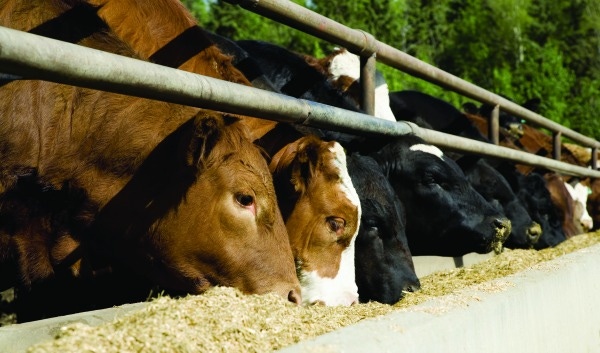Implants continue to be the most cost-effective and proven technology available to producers for improving feed efficiency and gain in cattle. Are you doing everything you can to ensure you’re capturing the full value of your implant investment? Learn more.
May 24, 2016

Sponsored Content
Helping clients reduce implant defects is time well spent
Implants are used in more than 90% of feedlot cattle in the U.S. today.1 It is no wonder the practice is so widely accepted. This cost-effective and proven technology has been shown to increase average daily gain of cattle by 18% and improve feed conversion by 9% compared to the performance of non-implanted controls.2
In today’s market, producers must capture every bit of additional performance implants can deliver, and doing so requires making the most of every implant. Reducing implant defects, such as missing or abscessed implants, is one critical area where your expertise working with clients can make a measurable difference in bottom line returns.
Economic impact of implants
“The performance benefits of implants result in a net return of as much as $92/head and in today’s market, those dollars can go a long way toward reaching breakeven,” explains Casey Maxwell, Ph.D. and Elanco technical consultant.3*
Implant defects, such as abscessed and missing implants, may not be top of mind for a lot of producers, but this problem is still very present and it is costly. Today, one abscessed implant can cost a producer $43/head, while a missing implant can cost $77/hd.4* Even very low defect rates can mean major losses for a pen of cattle, so it is important each person administering implants understands the dollars at stake and the proper steps to follow. Maxwell recommends practitioners regularly work with clients and feedyard employees to train them on a systematic approach to implant administration.
“Like any other product, implants must be administered with care and attention to detail. Cleanliness and proper use of the implant device are critical for successful administration to ensure the implant provides maximum performance improvement in the animal,” says Maxwell. “Dirty or wet environmental conditions, changes in personnel or a lapse in sanitation practices can result in situations that lead to implant defects, so a consistent training program with periodic retraining is a service that clients will definitely see the benefit from.”
As a basis for client training, he recommends reviewing the four Critical Control Points of Elanco’s Zero Defect Implanting† program.
Avoid implant site contamination
Sanitation is the first and most vital control point. Implanting in the middle one-third of the back of the ear in feedlot cattle breaks the skin in a highly contaminated area, which can lead to infection of the implant site, then abscess formation.
The implantation site, implant gun and work area should be cleaned and dried prior to working the cattle
Excessive dirt or manure should be scraped from the ear and the implant site should be washed with antiseptic solution using a clean sponge
Clean the ear a second time with a brush and clean antiseptic solution, then dry, and the ear is ready for implanting
Implants should be stored in a clean, air-tight container
Finally, between animals and after any “skips” off the ear, the needle should be disinfected by wiping it across a disinfectant-soaked sponge or rollers to remove hair and contaminants
Protect implant site
Despite the best efforts, implant site defects can still occur. The type of implant chosen is another factor that can affect the rate of implant defects. Using implants that protect the implant site are one way to boost implant performance and protect upside return.
“The performance benefits implants provide are something cattle feeders can’t afford to miss out on, so I recommend Component® with Tylan® implants because they deliver localized antibacterial protection that improves the health of the implant site so the implant can do its job,” Maxwell says. “By reducing the potential for implant site infection, the implant can provide maximum performance improvement.”
For more information on reducing implant defects, including details about free ear checks through Elanco’s Zero Defect Implanting program, reach out to your Elanco sales representative or technical consultant.
*Calculation assumes 700 lb. feeder weight, bought at $1.55/cwt, 150 days on feed, $250/ton feed, sold at $1.30/cwt.
†Implant training does not guarantee zero defects.
1Botts, Robert. 1996. Synovex Plus technical manual.
22013. “The use of growth-promoting implants in U.S. feedlots.” United States Department of Agriculture. Fort Collins, CO.
3 Duckett et.al. 2013. “Anabolic implants and meat quality.” Journal of Animal Science. 92: 3-96.
4Elanco Animal Health 2010, data on file.
The label contains complete use information, including cautions and warnings. Always read, understand and follow the label and use directions.
Component with Tylan
Administer one dose in the ear subcutaneously according to label directions.
Tylan is a trademark for Elanco’s brand of tylosin.
Elanco®, Component®, Tylan® and the diagonal bar are trademarks owned or licensed by Eli Lilly and Company, its subsidiaries or affiliates.
© 2016 Eli Lilly and Company, its subsidiaries or affiliates.
36739-4
USBBUCPT00055
You May Also Like



